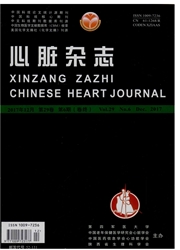

 中文摘要:
中文摘要:
目的建立一种稳定、高效,从小鼠骨髓中分离培养与定向诱导分化内皮祖细胞(EPCs)的方法。方法从小鼠骨髓中密度梯度离心法分离单个核细胞,经差速贴壁结合特殊培养基扩增并向内皮细胞定向诱导分化EPCs。应用免疫荧光和流式细胞技术鉴定内皮细胞系列标志:CD34、CD31、Flk-1和祖细胞标志CD133。并通过检测其对FITC标记的UEA-1的吸附和内吞DiI—ac—LDL来进行细胞功能学的鉴定。对分化细胞行vwF、CD31免疫组化染色鉴定,并与血管内皮细胞合成前列腺素能力进行比较。结果经过梯度密度离心和贴壁法选择的细胞表达内皮细胞特异性抗原CD34、CD31、Flk-1,部分表达CD133。分离所得细胞经EBM-2专用培养基培养后,第4天可见集落形成,培养第9天流式细胞仪检测其CD34、CD133、CD31、Flk-1阳性率分别为(44±4)%、(18±3)%、(49±4)%和(79±6)%,细胞能特异性吸附FITC标记的荆豆凝集素并内吞Dil—ac—LDL,约3周左右可融合近80%,形成铺路石样内皮细胞特有形态。传代后vWF、CD31免疫组化染色阳性率分别为(66±5)%和(56±5)%。诱导后的内皮祖细胞的合成前列腺素能力与血管内皮细胞之间无显著差异。结论从小鼠骨髓中分离培养与定向诱导分化EPCs的方法,效率高,稳定性和重复性好。
 英文摘要:
英文摘要:
AIM: To establish an efficient and stable method for simultaneous isolation, culture and differentiation of murine endothelial progenitor cells (EPCs) from bone marrow. METHODS : Mononuclear cells were isolated from murine bone marrow by density gradient (Histopaque-1077, Sigma) after differential centrifugation. The resulting cells were cultured and differentiated to endothelial cells (ECs) in EBM-2. The expressions of specific antigens (CD133, CD34, Flk-1 and CD31 ) on cell surface were analyzed by immunofluorescence and flow cytometer. Biological functions of endothelial cells were examined by the adsorption of ulex europaeus-agglutinin (UEA) labeled by fluorescein isothiocyanate (FITC) and DiI-ac-LDL internalization. Expression of vWF and CD31 of ECs differentiated from EPCs was also assessed by immunohistochemistry. RESULTS: Cells were obtained from mouse bone marrow by density gradient, and adhesive cells expressed CD133, CD34 and Flk-1 and formed clusters at the 4th day. At the 14th day, UEA adsorption was labeled by FITC and DiI-ac-LDL internalization were positive. Expression of CD133 in adhesive cells decreased, whereas CD31 increased. Positive ratios of CD34^+ , CD133^+ , Flk-1^+ and CD31^+ were (43.55±4. 12)%, (18.29±2.56)% respectively. After 3 weeks, they differentiated into mature (48.78±3.96)% and (78.89±6.38)%, ECs forming cobblestone monolayers. There was no difference in secretion of PGI2 between ECs from EPCs and ECs from mouse aorta. CONCLUSION: An efficient, stable and replicable method for simultaneous isolation and culture of MSCs and EPCs from a single mouse has been established.
 同期刊论文项目
同期刊论文项目
 同项目期刊论文
同项目期刊论文
 Age-dependent mobilization of circulating endothelial progenitor cells in infants and young children
Age-dependent mobilization of circulating endothelial progenitor cells in infants and young children Optimisation of Dex-GMA nanoparticles prepared in modified micro-emulsion system: Physical and biolo
Optimisation of Dex-GMA nanoparticles prepared in modified micro-emulsion system: Physical and biolo Novel glycidyl methacrylated dextran/gelatin nanoparticles loaded with basic fibroblast growth facto
Novel glycidyl methacrylated dextran/gelatin nanoparticles loaded with basic fibroblast growth facto 期刊信息
期刊信息
